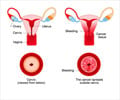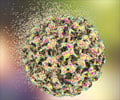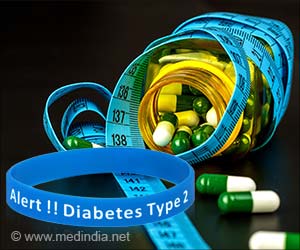Human papillomavirus (HPV) vaccine can prevent some forms of breast cancer in women and save thousands of lives each year, suggested an Australian study.
Researchers at the University of New South Wales used genetic probes to test cancerous breast cells, and found several strains of HPVs, which are known to have a high risk of initiating cancer of the cervix.HPV has a causal role in 90-95 per cent of cervical cancers.
Led by Visiting Professor James Lawson at UNSW, the researchers confirmed the presence of high-risk HPV in the nuclei of breast cancer epithelial cells in five (39 per cent) of 13 ductal carcinoma in situ and three (21 per cent) of 14 invasive ductal carcinoma (IDC) breast cancer specimens.
Non-invasive or in situ cancers are those confined to the milk-making glands, and do not spread to other parts of the breast or body.
Invasive cancers such as IDC are more serious and account for 70-80 percent of all breast cancers.
"The finding that high risk HPV is present in a significant number of breast cancers indicates they may have a causal role in many breast cancers. Confirming a cancer-causing role for HPV in some breast cancers establishes the possibility of preventing some breast cancers by vaccination against HPV," said Dr Noel Whitaker, a co-author of the new report.
Advertisement
However, those studies have also showed widely varying results, with the prevalence of HPV-positive breast cancer in ranging from as low as four per cent to as high as 86 per cent, and have been clouded by difficulties in detecting the virus in breast specimens.
Advertisement
The technique is based on taking small genetic samples and rapidly copying them to provide a large enough sample to study.
The researchers in the new study have dealt with these issues by using a technique (in situ PCR) that avoids cross-contamination and that provides evidence about whether HPV genetic material is present in the nuclei of human breast cancer specimens.
They validated their findings by looking for "telltale" changes linked to HPV such as enlarged nucleus surrounded by a characteristic "halo".
Now, the researchers are working on a new method that will make testing even quicker, cheaper and simpler.
The study has been published in the British Journal of Cancer.
Source-ANI
SRM














